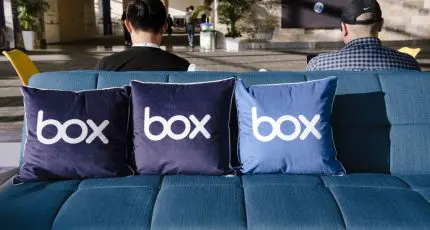Box
could be facing troubled times if a Reuters story from last week
is accurate. Activist investor Starboard Value took a 7.9% stake in the storage company
in September 2019, and a year ago took three board seats
as its involvement in the cloud company deepened. It seemed only a matter of time before another shoe dropped.
Activist investor Starboard Value is reportedly after three additional board seats.
That thunk you just heard could be said shoe as Starboard is reportedly after three additional board seats. Those include current CEO Aaron Levie’s and two independent board members, all of whom have their seats coming up for election in June. If the firm were to obtain three additional seats, it would control six of nine votes and could have its way with Box.
What could the future hold for the company given this development (assuming it’s true)? It seems changes are coming for Box.
Below, we’ll explore how Box got to this point. And if an acquisition is in Box’s future, just who might be in the market for a cloud-native content management company built to scale in the enterprise? There would very likely be multiple suitors.
Box’s fickle financial fate
Starboard may have reason to be frustrated by Box’s performance. The cloud company’s stock price and market cap remain stubbornly low. Its share price is mired around $18 a share, not much higher than the price
it went public at in 2015
when it was valued at $14 per share. Its market cap today is $3 billion, which is lacking in comparison to fellow cloud stalwarts like Dropbox at $9 billion, Slack at $23 billion or Okta at $34 billion.
Activist investor Starboard Value taking three Box board seats as involvement deepens
Remember back in March 2014 when
Box announced it was going public
? It then did something highly unusual, delaying the deed 10 months
until January 2015. One thing or another kept the company from pulling the trigger and just doing it. Perhaps it was a sign.
Instead,
Box raised $150 million more
after its S-1 filing received a lackluster response from the market
. Looking back, you could argue that the SaaS model was simply less well known in 2014 than it is today. Certainly public investors are more sympathetic to software companies that run deficits in the name of growth than they were back then.
But when Box did file again, finally pricing at $14 per share in 2015, it received a strong welcome. The company had priced above its $11 to $13 per-share IPO range
as TechCrunch reported at the time
and instantly shot higher. We wrote on its IPO day
that the cloud company quickly “surged to over $20 a share and [was then] trading at $23.67.”
A year later, our continuing coverage had flipped with
the share price stuck at $10
in January 2016.
 简体中文
简体中文

